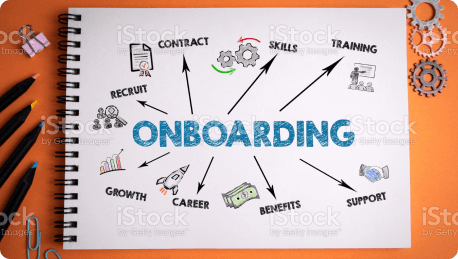
Your onboarding process is the key to not only employee success but to retaining the new hires companies have invested in. According to Human Resources experts at MIT, most new hires actually decide if they are going to stay with an organization in the first 90 days; a successful onboarding process will help ensure that companies and hiring managers are retaining top talent. Replacing an employee, even a new one is an expensive proposition; it generally costs three times the employee's annual salary to successfully replace them.
1. Create accurate expectations
Successful onboarding actually begins before you even hire your preferred candidate. By setting reasonable expectations and clearly relaying the responsibilities of the job, you can be sure that your chosen hire has a realistic idea of what to expect. Talking up a needed but not particularly exciting job can backfire if you create expectations that are just too high; building up the position could help you secure your top candidate, but they may not stick around after onboarding is complete.
A key element to successful onboarding starts from the moment the potential employee begins the application process. Being resourceful during the interview with human resource technology such as online video interview platforms eliminates time wasted interviewing candidates who do not have the skills necessary for the job or do not fit your company's culture. Due diligence during the interview process to find the best-qualified candidate will ensure the candidate will have a smooth transition to get acclimated to his or her role because they have the required skill sets and industry knowledge. By using the interview process to screen for compatibility, you also help ensure that your chosen candidate will assimilate rapidly and that the onboarding process will be a success.

Successful onboarding starts from the moment the potential employee begins the application process.
2. Build a resource library
A structured onboarding process that removes subjectivity ensures that every new hire has the same, positive experience. Having a clearly outlined process not only makes it easier to be sure that every new hire has the skills and tools needed for him or her to succeed, but it also ensures that the company is not discriminating in any of the policies or practices. While hiring managers would not set out to discriminate, having a structured process that every candidate, new hire or current employee approaches in the same way eliminates any chance that a current employee could feel like they are being treated differently than other new hires.
It is vital to remove the assessment subjectivity among new hires and current employees through a candidate market medium comparison. The candidate market medium comparison in-depth report allows companies to benchmark new employees and current employees to ensure each position is based on talent, and skills and removes biased hiring. Hiring managers are empowered to make data-driven decisions y and have the advantage of understanding the strengths and opportunities for their employees to better construct an onboarding plan that is people-centric versus a static, unengaging orientation. A resource database such as the candidate market median comparison that consists of new hires and current employees also helps companies gauge the area of expertise of their employees to create a culture of promoting from within which will motivate new hires. A culture of promoting from within sets the standard for every employee so that their efforts and hard work get noticed. The candidate market medium comparison also gives the hiring manager the opportunity to mentor the new hires and current employees by investing in growing their skills and subsequently making the business more efficient with competent, happy employees.
3. Determine Responsibility
Who is responsible for onboarding? While your management and HR team may be in charge of refining the process and introducing some elements, getting input and support from other team members is essential. Sharing the responsibility helps the new hire meet the key players in the company and the input from the management team and direct supervisors can help you further refine your process. Although mentorship is not mandatory, the new hires would benefit greatly from knowing that the company cares about their professional growth.
A leader within the company being paired with a new hire will make the business thrive. New hires are likely to feel welcome and engaged and current employees will be revised by taking on leadership roles. Simply put, leaders produce more leaders which in turn creates accountability for one another.
4. Make it memorable
Onboarding doesn't have to be a chore or a waste of time; a more memorable and enjoyable experience will make the information far more likely to stick with your new hires. Games, contests, social opportunities and other elements will make your onboarding process less of a grind and more interactive and fun for all parties involved. However, have an intent behind the process that will ensure the new hire is learning about the company's vision, objectives, and culture.
The onboarding process starts the moment the candidate starts the interview process, so remember to reduce time to closure with the award-winning HR solution Panna. Panna, the world's first AI-driven online video interview platform, ensures the candidate experience and onboarding cater to their professional success. Find out how Panna empowers companies to find the right candidate and use our market medium market comparison report to understand employee's strengths and opportunities for a streamlined onboarding experience.

Rahul Kukreti
